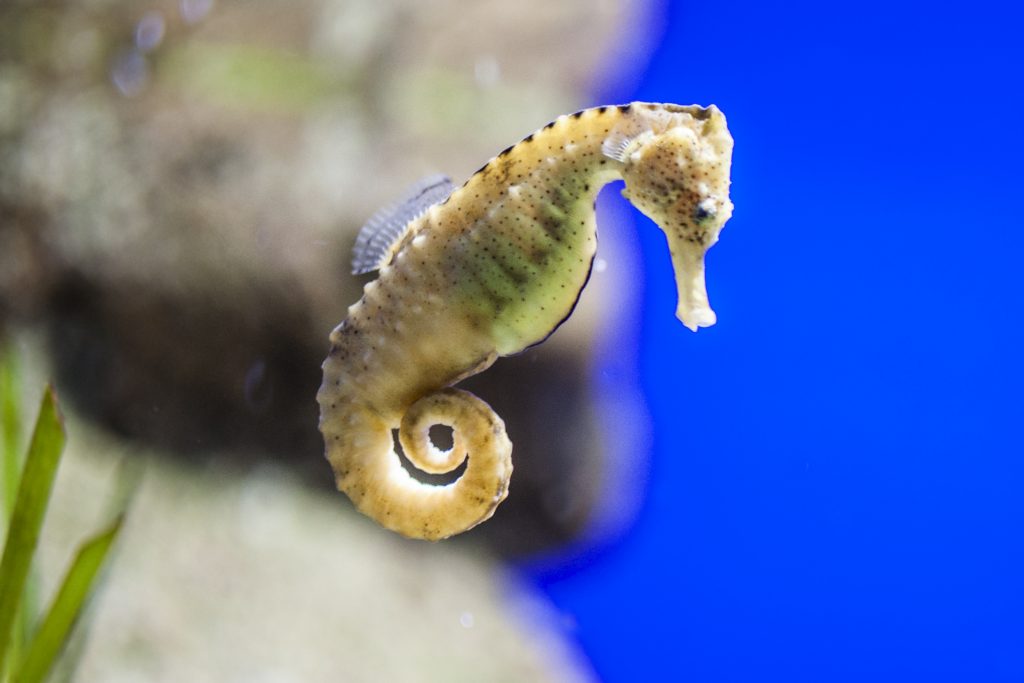Seahorses are magical looking aquatic creatures that quickly capture the heart, mind, and imagination. In fact, people have been observing the distinct characteristics of seahorses for centuries. One thing is for certain, they are unlike mostly any other fish!
What Make Seahorses Unique
As part of the Sygnathid family (Genus Hippocampus), this family includes both pipe-fishes, sea dragons, and 36 different species of seahorses. Known for swimming upright and using a dorsal and modified pectoral fin (called an opercular fin) for propulsion, seahorses also lack a caudal fin and instead boast a long muscular tail. Seahorses also lack scales and their bones are structured into a series of modified plates that act as bony armor. With a bent neck and long snout, a seahorse appears to have a horse-like head (hence their common name).
Environment They Need
Believe it or not, seahorses are able to live in a diverse range of habitats. In a home aquarium seahorses require much of the same care as other fishes. However, there are a few main differences: seahorses are very sensitive to changes in water quality, temperature, and even light. For proper care, a seahorse tank should have very gentle water flow without air bubbles. The tank should also be taller tank to accommodate seahorses vertical courtship rituals and ample branch-like decorations for them to wrap their tails around to rest. Tanks should be kept free of sharper material like coral since seahorses lack scales to protect themselves. Additionally they are best kept with other seahorse rather than fish, so be sure to do your research when developing your aquarium live creature mix!
Nutrition They Require
High quality, vitamin enriched and very clean frozen foods are the best options for seahorses. We would avoid live foods if possible as they can bring parasite and bacterial issues your seahorses might not be able to fend off. Seahorses require fatty acid (DHA and EPA) rich foods like Mysis Shrimp in a size that allows them to easily take in the food. Since seahorses have an intestinal tract rather than a formal stomach, they have to eat more frequently than other fish in order to satisfy their nutritional needs. Small feedings every couple hours is a must and any loss of weight is a strong sign they are not getting enough food or are stressed due to some environmental issue.
These sea creatures require time, patience, and careful attention but yield many rewards including unique personalities, the ability to observe courting rituals and individual greetings!

